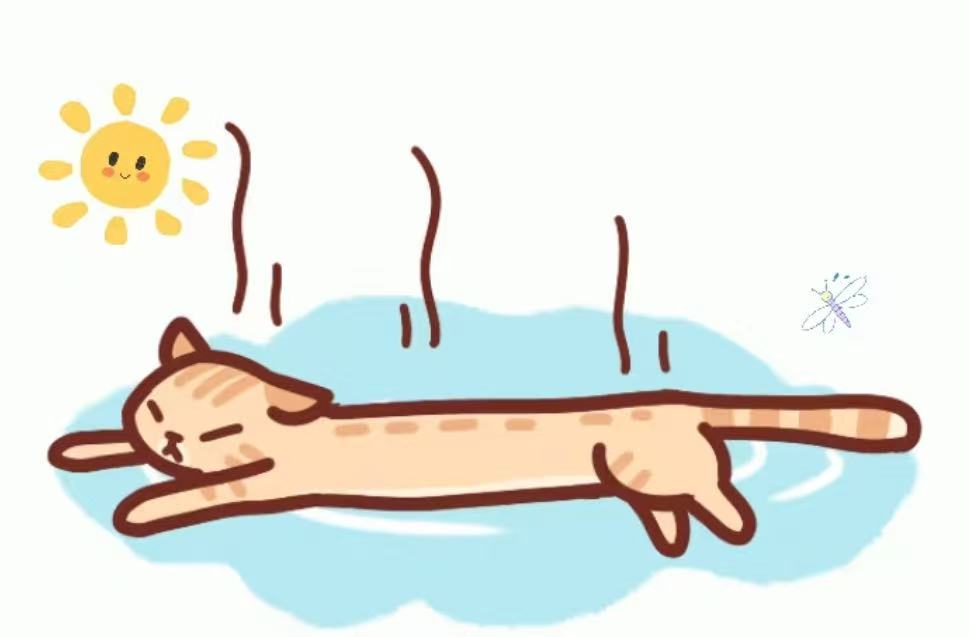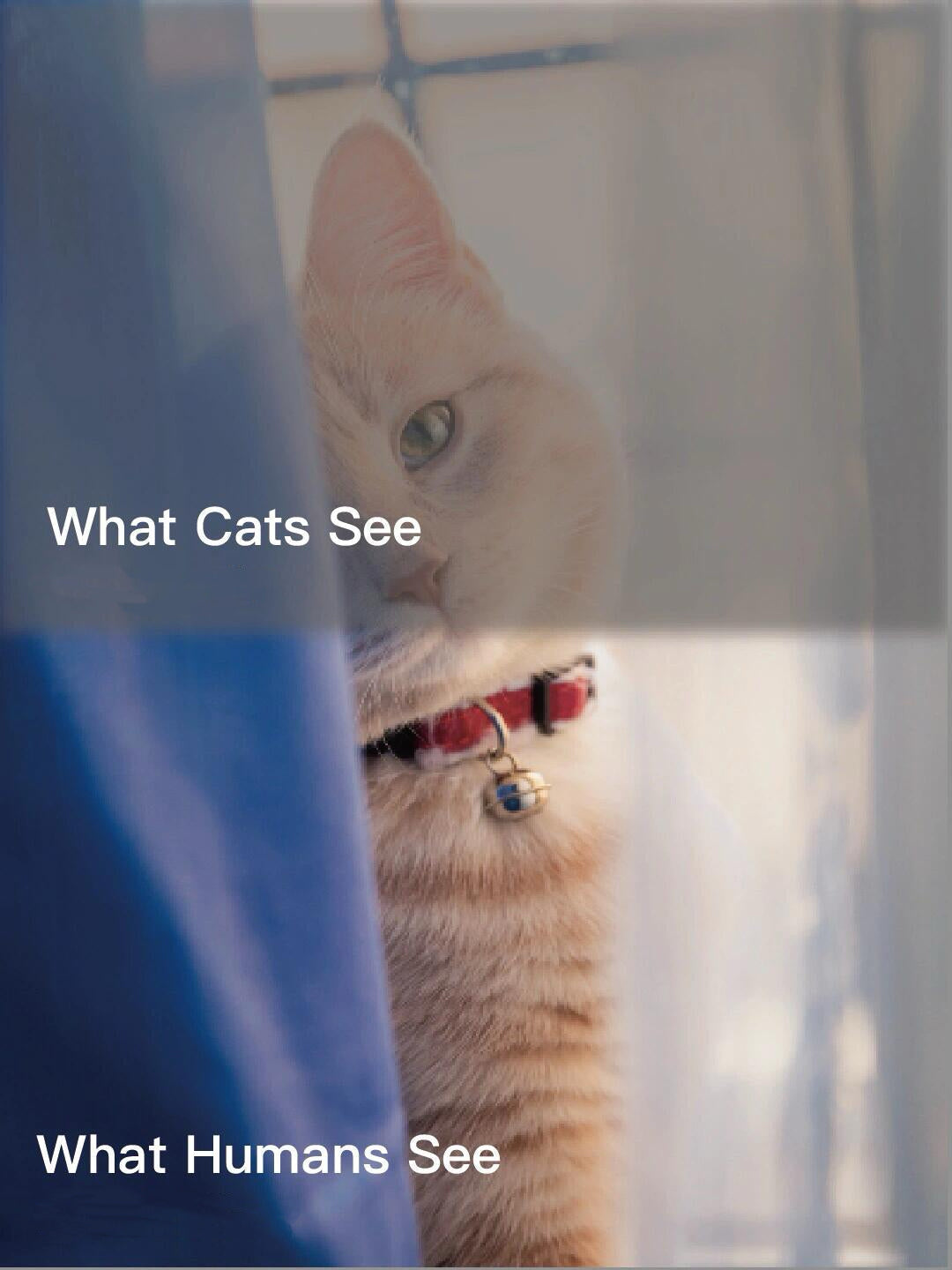As the summer heat rolls in, it's clear that high temperatures can be incredibly tough on our furry feline friends. Cats, with their thick coats, can easily overheat in the scorching sun, and the sweltering weather can quickly become a challenge for both them and their owners.
In a world where air conditioning is often the savior of our lives, how can we ensure our cats are staying cool and comfortable throughout the summer?
Here’s what you need to know about keeping your cat safe in the heat and ensuring they have a smooth summer season.
Keep Your Cat Cool: Tips for a Comfortable Summer
1. Ensure Proper Ventilation
One of the most important things you can do for your cat during the summer months is ensuring they have a well-ventilated environment. Here’s how:
-
Air Conditioning: If you have air conditioning, make sure the temperature is set to around 26-27°C (79-81°F). Avoid making the difference between indoor and outdoor temperatures more than 7°C (12°F) to prevent your cat from becoming stressed due to drastic changes in temperature.
-
Fans:If you can’t keep the air conditioning on for your pet all day,
using fans is a great alternative. Fans will help circulate the air, ensuring your cat is breathing in fresh, cool air. However, remember to secure windows if your cat is alone to prevent them from jumping out.
-
Cooling mat:A durable and reliable cooling mat effectively helps reduce heat. Made with safe, eco-friendly gel, it naturally absorbs heat and provides lasting coolness—an essential for keeping pets comfortable in the summer.
2. Use Natural Methods to Keep Mosquitoes Away
Many mosquito repellents and products contain chemicals that can be harmful to cats. Here’s how to avoid them:
-
Electric Mosquito Zappers: Consider using electric mosquito zappers or repellents that don’t contain harmful chemicals.
-
Plants: Natural plants like catnip or rosemary can act as natural mosquito repellents. You can plant these in your home or garden, offering both an aesthetically pleasing and functional solution.
3. Hydration is Key: Keep Multiple Water Bowls Available
Cats can become easily dehydrated during the summer heat, which can lead to heatstroke. Make sure to:
-
Provide Fresh Water: Always offer fresh water to your cat throughout the day. You can place multiple water bowls in different areas to encourage drinking.
-
Regularly Clean Bowls: Be sure to clean your cat’s water bowls regularly and change the water to prevent bacterial growth.
4. Don’t Shave Your Cat's Coat
It might seem tempting to shave your cat to keep them cooler, but this can actually make matters worse:
-
Brushing: Regularly brush your cat’s fur to remove loose hairs and prevent matting. This helps with air circulation and cooling.
-
Sweat Glands: Cats sweat through their paw pads, and shaving their fur could make it harder for them to regulate their body temperature.
Recognizing the Signs of Heatstroke in Cats
It’s essential to be aware of the symptoms of heatstroke and act fast if you suspect your cat is overheating. Common signs of heatstroke in cats include:
-
Labored Breathing: Your cat might breathe heavily or have difficulty breathing even when lying quietly.
-
Sweating Pads: Their paw pads may become darkened or moist from excessive sweating.
-
Weakness or Tremors: They may experience weakness, seizures, or become unresponsive.
-
Vomiting and Diarrhea: Excessive salivation, vomiting, and diarrhea can occur as a result of overheating.
-
Loss of Appetite: Cats suffering from heatstroke may refuse to eat or drink entirely.
5. What to Do If Your Cat Gets Heatstroke
If your cat shows signs of heatstroke, it’s important to act quickly to cool them down:
-
Move to a Cool Place: Take your cat to a cool, well-ventilated area.
-
Provide Water: Offer them water to drink, but don’t force them.
-
Use a Fan: Use a fan to increase airflow and cool down your cat’s body temperature.
-
Avoid Drastic Temperature Changes: Don’t move your cat to a room with a drastically different temperature as it could cause further stress.
-
Cool with a Wet Cloth: Gently wipe your cat's belly and paws with a cool, damp cloth.
-
Seek Veterinary Care: Once symptoms improve, it’s still important to visit the vet for a full checkup.
6. Keep Your Cat's Food Fresh
Hot weather can quickly cause food to spoil, so make sure to:
-
Avoid Leaving Food Out: Don’t leave wet food or dry food in the bowl for long periods. High temperatures can cause bacterial growth and spoilage.
-
Small, Frequent Meals: Rather than leaving food out for free-feeding, give your cat smaller, more frequent meals to prevent food waste and spoilage.
-
Clean the Food Bowl: Always wash your cat’s food bowls thoroughly to avoid bacterial contamination.
7. Avoid Taking Your Cat Outdoors During Peak Heat
The intense summer heat is not only uncomfortable for humans but can be deadly for cats, especially when confined in carriers or in hot outdoor environments:
-
Avoid Outdoor Trips: Try to limit your cat’s time outside, especially during the hottest parts of the day. If you must take them out, be sure their carrier is well-ventilated, and keep it out of direct sunlight.
-
Don’t Leave Cats in Cars or on Balconies: Never leave your cat in a car or on a balcony during hot weather, as it can quickly lead to overheating.
By following these simple tips, you can help ensure that your cat stays cool, hydrated, and comfortable throughout the hot summer months.

